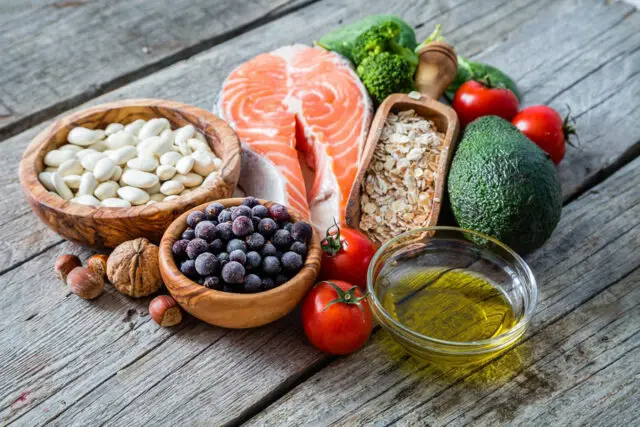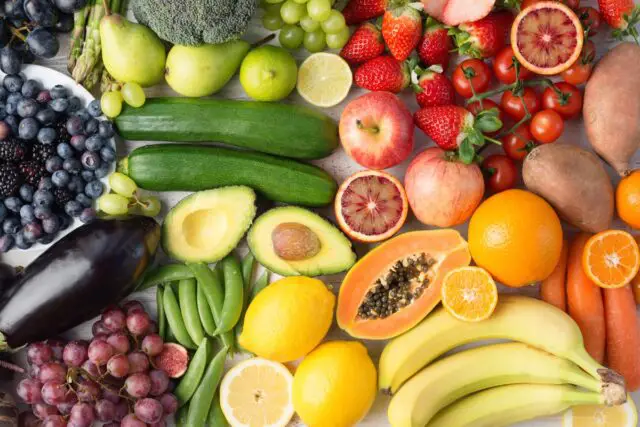Every month there seems to be a new diet making the rounds on the internet. One of the latest is the Nordic diet, which some say may be better for your health than the Mediterranean diet. And science is starting to suggest that it might at least have some similar benefits.
The Nordic diet is based on the traditional foods available in the Nordic countries. The staple foods it includes are whole grains (particularly rye, barley, and oats), fruits (particularly berries), tubers (such as beets, carrots, and turnips), fatty fish (such as salmon, tuna, and mackerel), legumes, and low-fat dairy.
But unlike the Mediterranean diet, which has a long tradition and whose health benefits have been consistently observed in population studies and research, the Nordic diet was developed by a committee of food and nutrition experts, along with chefs, food historians and ecologists.
Eating more vegetables and less meat
The motivation to create it was to improve dietary guidelines in the Nordic countries in a sustainable way, while seeking to create a local identity linked to food and culture. Still, the Nordic diet shares a number of similarities with the Mediterranean diet, in that it consists of more whole foods and fewer or none of the highly processed ones. It also encourages eating more vegetables and less meat.
Perhaps the key feature of the Nordic diet is that it encourages people to include a wide range of locally available foods, such as mosses, seeds, vegetables and herbs (including those that grow wild). This is why some berries like lingonberries are central to the Nordic diet, while citrus and tropical fruits are not.

Although most of the Nordic diet and the Mediterranean diet are made up of plants, the type of plants are very different. For example, people following the Nordic diet are encouraged to eat foods like seaweed and kelp (which are rich in nutrients like iodine, omega-3 fatty acids, and even vitamin D), as well as other locally available vegetables and fruits .
For the Mediterranean diet, people include leafy vegetables such as spinach, as well as onions, courgettes, tomatoes, and peppers, which are all indigenous to the region.
What do the tests say?
The Nordic diet is still relatively new and was first published in 2010. This means that it is probably too early to know if it reduces the risk of developing chronic diseases.
The Mediterranean diet, on the other hand, has been studied by researchers since the 1950s and 1960s, which means we have a better understanding of its links to a lower risk of developing heart disease, type 2 diabetes, and some types of cancer.
But some studies looking retrospectively at eating habits found that people who ate diets similar to what is now known as the Nordic diet tended to be healthier.These studies found that Nordic eating patterns were associated with a lower risk of heart disease and type 2 diabetes in people from the Nordic countries. However, the relationship between a lower risk of developing disease and Nordic diets is less strong in people from other countries. The reason for this is currently unclear.
The problem with these population studies is that they looked at a dietary pattern that technically did not exist, as it was not defined until after they participated in the studies. This means that the participants may not have been following the Nordic diet on purpose, making it difficult to know whether the reported health benefits were actually due to the diet itself.
However, a recent (albeit small) review of several studies on the Nordic diet, published in the European Journal for Nutrition, found that it can reduce some risk factors, including weight and LDL cholesterol (often called “bad” cholesterol). ). No improvements were found, however, in blood pressure or total cholesterol.
Too early to tell
At the moment, it is probably too early to determine whether the Nordic diet has any long-term health benefits and is better for our health than the Mediterranean diet.But, according to the research that has been carried out, it does seem that the Nordic diet holds promise for health.

Research also shows that some of the main staples of the Nordic diet (including whole grains and oily fish) are themselves linked to better health, including reduced risk of heart disease.This suggests that combining these foods while following the Nordic diet could lead to similar health benefits.
Local foods
The Nordic diet is not just about health. It was also developed to help the planet by using local and sustainable foods that lead to a healthier diet.For now, some of the main barriers preventing the Nordic diet from being adopted are different tastes and price. But if these barriers are overcome, the Nordic diet could become a more sustainable way of eating for those countries, as well as a local diet for others.
While it may be too early to say whether the Nordic diet is healthier than well-known ones such as the Mediterranean, it can provide inspiration on how to adapt diets to focus more on consuming locally grown and available whole foods.

However, eating foods that are common to the Mediterranean and Nordic diets, such as vegetables, seeds, legumes, whole grains, and fish, as well as consuming less red and processed meat, is probably the foundation of a healthy diet.This, along with eating a variety of foods and trying to keep them mostly plant-based, is more important to your health than following a specific diet.

For those who have experienced shifts in consciousness and know that more peace, joy, and love awaits in a better living environment. A bold shared vision. A living community and hub for innovation. A sustainable ecosystem for living and working. A model for the new future.
